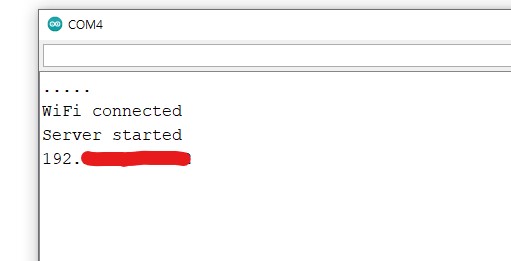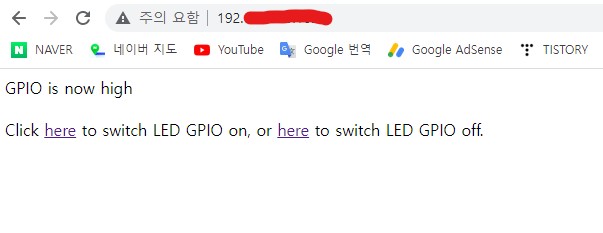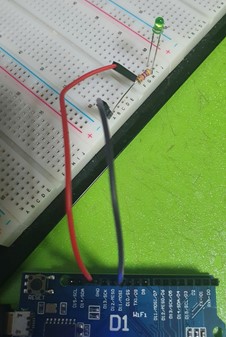안녕하세요 반갑습니다.
아두이노 Wemos D1 R1 제품으로 간단한 iot 제품을 구현해봅시다.
Wemos R1 D1
Wemos R1 D1은 이렇게 생겼습니다.

시중에서 4~5천 원 정도 하는 거 같네요
이 제품은 5핀 케이블을 써야 됩니다.
5핀 to usb 케이블로 컴퓨터랑 연결해주세요 그런 다음 아두이노 IDE를 켭시다.
아두이노를 키면 세팅해야 될 게 있습니다.

파일 -> 환경설정에 들어가주세요

http://arduino.esp8266.com/stable/package_esp8266com_index.json을
추가적인 보드 매니저 URLs에 입력해줍시다.

툴 -> 보드 -> 보드 매니저를 눌러주세요

ESP8266를 검색하고 설치해주세요

보드는 LONIN(WeMos) D1 R1로 설정해주세요
그런 다음 아래의 코드를 입력해주세요
/*
This sketch demonstrates how to set up a simple HTTP-like server.
The server will set a GPIO pin depending on the request
http://server_ip/gpio/0 will set the GPIO2 low,
http://server_ip/gpio/1 will set the GPIO2 high
server_ip is the IP address of the ESP8266 module, will be
printed to Serial when the module is connected.
*/
#include <ESP8266WiFi.h>
#ifndef STASSID
#define STASSID "본인의 와이파이 아이디"
#define STAPSK "본인의 와이파이 비밀번호"
#endif
const char* ssid = STASSID;
const char* password = STAPSK;
// Create an instance of the server
// specify the port to listen on as an argument
WiFiServer server(80);
void setup() {
Serial.begin(115200);
// prepare LED
pinMode(13,OUTPUT);
digitalWrite(13, 0);
// Connect to WiFi network
Serial.println();
Serial.println();
Serial.print(F("Connecting to "));
Serial.println(ssid);
WiFi.mode(WIFI_STA);
WiFi.begin(ssid, password);
while (WiFi.status() != WL_CONNECTED) {
delay(500);
Serial.print(F("."));
}
Serial.println();
Serial.println(F("WiFi connected"));
// Start the server
server.begin();
Serial.println(F("Server started"));
// Print the IP address
Serial.println(WiFi.localIP());
}
void loop() {
// Check if a client has connected
WiFiClient client = server.available();
if (!client) {
return;
}
Serial.println(F("new client"));
client.setTimeout(5000); // default is 1000
// Read the first line of the request
String req = client.readStringUntil('\r');
Serial.println(F("request: "));
Serial.println(req);
// Match the request
int val;
if (req.indexOf(F("/gpio/0")) != -1) {
val = LOW;
} else if (req.indexOf(F("/gpio/1")) != -1) {
val = HIGH;
} else {
Serial.println(F("invalid request"));
val = digitalRead(13);
}
// Set LED according to the request
digitalWrite(13, val);
// read/ignore the rest of the request
// do not client.flush(): it is for output only, see below
while (client.available()) {
// byte by byte is not very efficient
client.read();
}
// Send the response to the client
// it is OK for multiple small client.print/write,
// because nagle algorithm will group them into one single packet
client.print(F("HTTP/1.1 200 OK\r\nContent-Type: text/html\r\n\r\n<!DOCTYPE HTML>\r\n<html>\r\nGPIO is now "));
client.print((val) ? F("high") : F("low"));
client.print(F("<br><br>Click <a href='http://"));
client.print(WiFi.localIP());
client.print(F("/gpio/1'>here</a> to switch LED GPIO on, or <a href='http://"));
client.print(WiFi.localIP());
client.print(F("/gpio/0'>here</a> to switch LED GPIO off.</html>"));
// The client will actually be *flushed* then disconnected
// when the function returns and 'client' object is destroyed (out-of-scope)
// flush = ensure written data are received by the other side
Serial.println(F("Disconnecting from client"));
}
입력하는데 번거롭다면 위의 파일을 다운로드해서 복사 붙여 넣기를 진행해주세요
여기서
#define STASSID "본인의 와이파이 이름"
#define STAPSK "본인의 와이파이 비밀번호"
라고 적어놨는데 본인의 와이파이 아이디, 본인의 와이파이 비밀번호를 입력해주세요
그리고 업로드를 해주고 시리얼 모니터를 켜줍시다.
그럼 시리얼 모니터에 자신의 와이파이가 나옵니다.

이 와이파이를 웹브라우저에 입력해주세요
그럼 아래와 같은 화면이 나옵니다.

그다음 브레드보드와 점퍼선을 가지고 다음과 같이 회로를 구성해주세요

그다음 자신의 아이피 웹사이트로 들어간다음
here부분을 클릭해줍시다. led가 꺼졌다 켜졌다를 반복합니다.

'Coding > Arduino' 카테고리의 다른 글
| 아두이노 16X2 LCD 제어하기 (0) | 2022.06.20 |
|---|---|
| 아두이노 적외선 라인트레이서 hw-511 사용법 (0) | 2022.06.17 |
| 아두이노 압력센서 값 얻어오기 (0) | 2022.06.15 |
| 아두이노 서보모터(sg90) 제어하기 (0) | 2022.06.15 |
| 아두이노 LED 켜기 (0) | 2022.06.15 |




